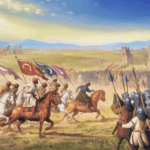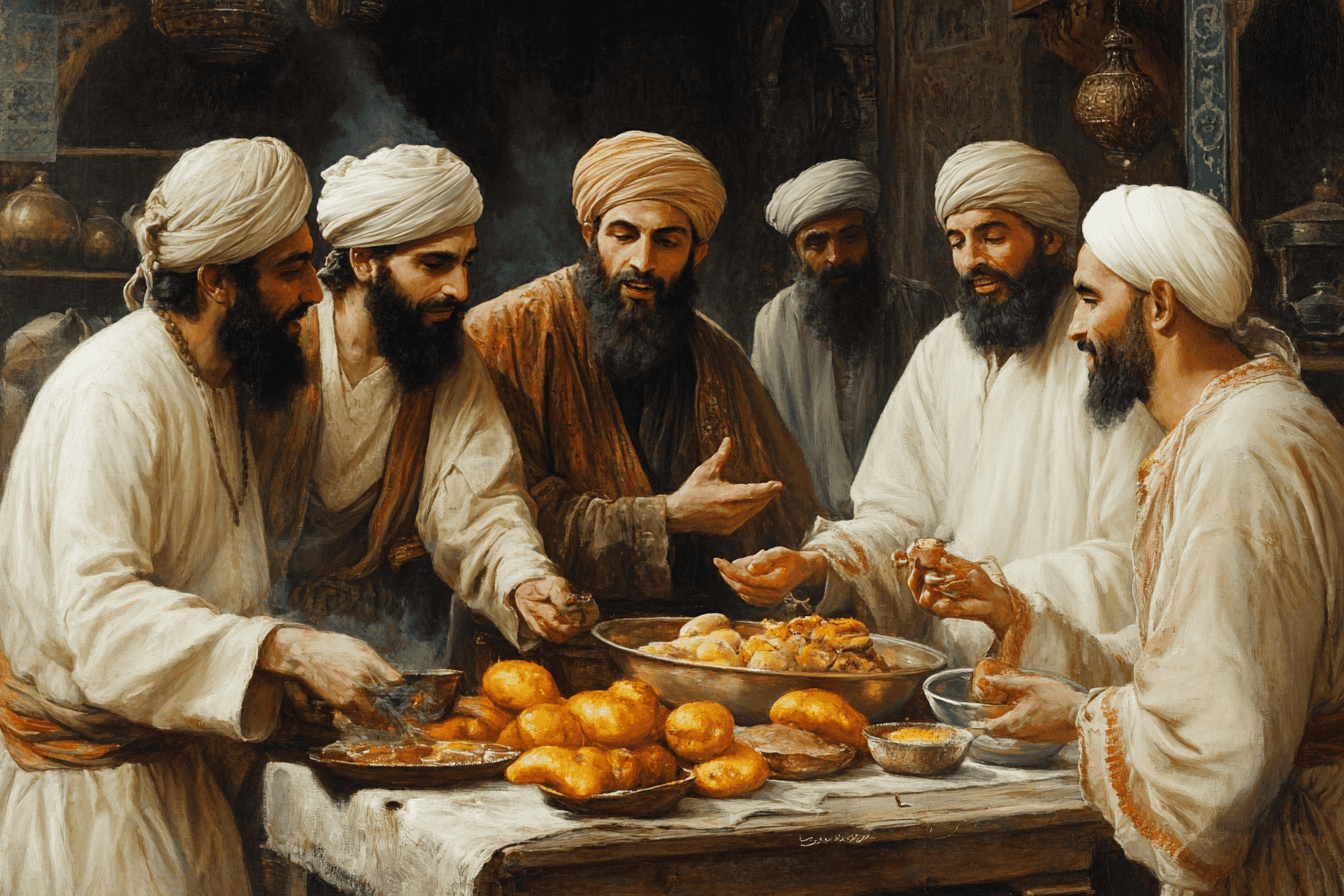
Muhammad, the founder of Islam, was born around 570 CE in Mecca, a city in the Arabian Peninsula. He was born into the Banu Hashim clan of the Quraysh tribe, one of Mecca’s prominent families. His father, Abdullah, died almost six months before Muhammad’s birth, leaving him fatherless from the start.
Early Childhood
In accordance with local custom, the infant Muhammad was sent to live with a Bedouin family in the desert, as this environment was considered healthier for infants. He stayed with his foster mother, Halimah bint Abi Dhuayb, and her husband until he was two years old. This early desert life likely exposed him to the traditional Bedouin way of life and values.
Tragedy struck again when Muhammad was six years old. His biological mother, Amina, fell ill and passed away. Now an orphan, Muhammad came under the care of his paternal grandfather, Abd al-Muttalib. However, this arrangement was short-lived, as Abd al-Muttalib died when Muhammad was only eight years old.
Adolescence and Early Adulthood
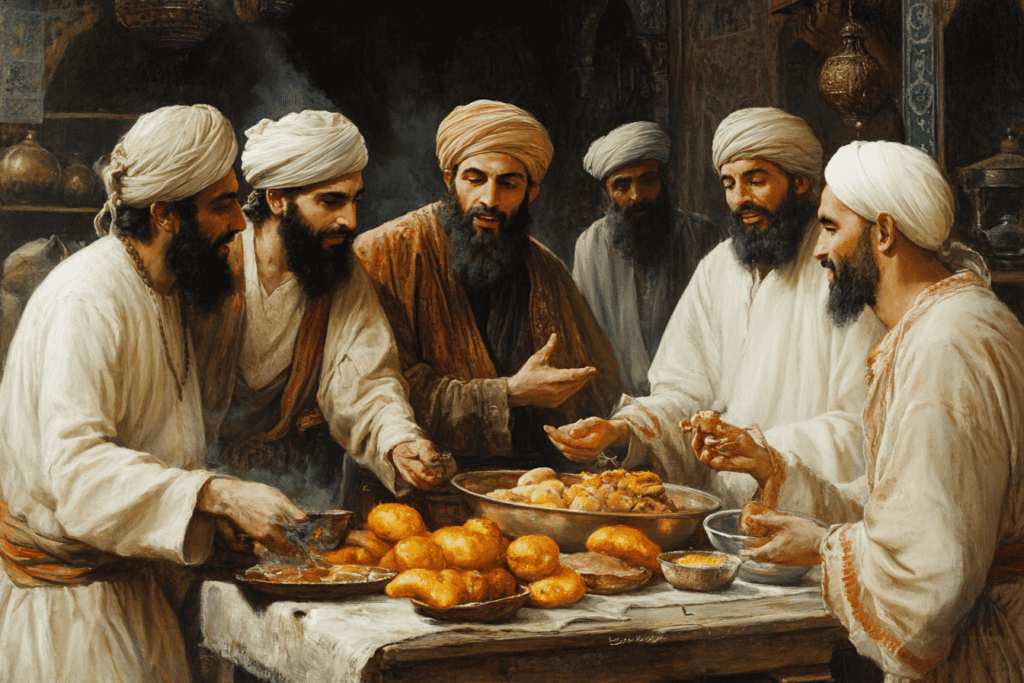
Following his grandfather’s death, Muhammad’s uncle Abu Talib, the new leader of Banu Hashim, took on the responsibility of raising him. This period marked the beginning of Muhammad’s exposure to the world of commerce, which would shape his early adult years.
While still in his teens, Muhammad began accompanying his uncle on trading journeys to Syria. These trips provided him with valuable experience in commercial trade, which was one of the few career paths available to an orphan in Meccan society. During one of these journeys, when Muhammad was either nine or twelve, Islamic tradition states that he encountered a Christian monk or hermit named Bahira, who is said to have foreseen Muhammad’s future as a prophet.
As a young man, Muhammad became involved in the lucrative trade routes between the Indian Ocean and the Mediterranean Sea. His reputation for honesty and trustworthiness grew during this time, earning him the nicknames “al-Amin” (the faithful, trustworthy) and “al-Sadiq” (the truthful). These qualities would later play a crucial role in his prophetic mission.
Marriage to Khadijah
When Muhammad was about twenty-five years old, he married Khadijah, a wealthy widow who was fifteen years his senior. This marriage marked a significant turning point in Muhammad’s life. Khadijah’s status elevated Muhammad’s position in Meccan society, providing him with financial security and social standing.
Muhammad and Khadijah’s marriage was by all accounts a happy and monogamous one, despite the common practice of polygamy at the time. They had six children together: four daughters who survived to adulthood, and two sons who tragically died in infancy. Khadijah’s support and companionship would prove invaluable in the years to come, especially during the early days of Muhammad’s prophetic mission.
The First Revelation
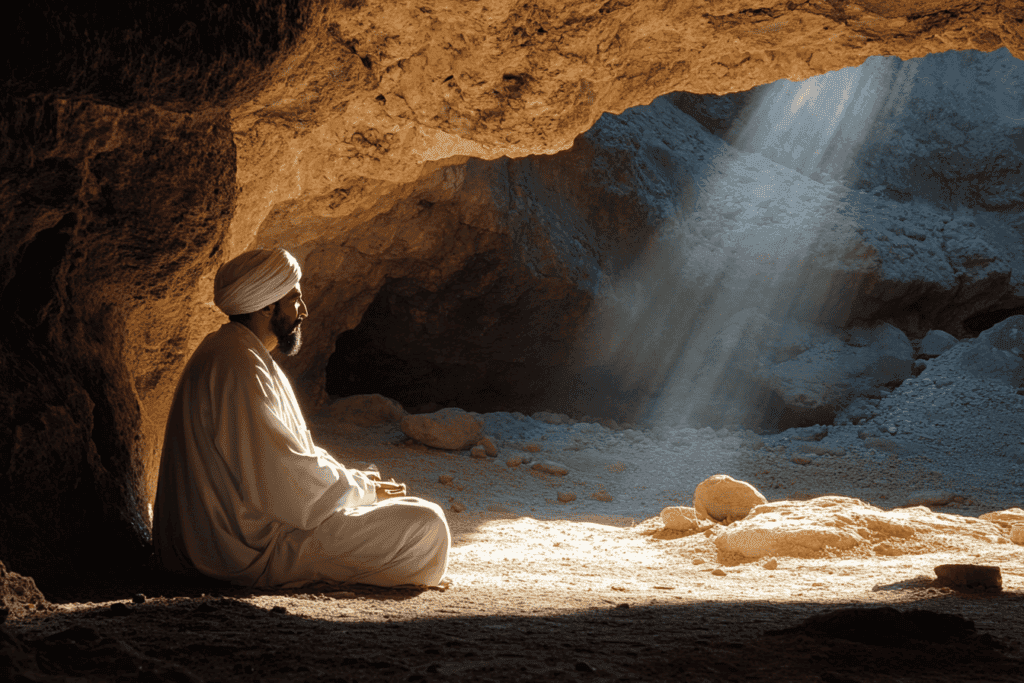
As Muhammad approached his fortieth year, he began to seek solitude and contemplation. He would often retreat to a cave called Hira on Mount Nur, near Mecca, to meditate and pray. It was during one of these retreats, in the year 610 CE, that Muhammad reported experiencing his first divine revelation.
According to Islamic tradition, the angel Gabriel appeared to Muhammad in the cave and commanded him to “Recite!” (Iqra in Arabic). This event, known as the Night of Power (Laylat al-Qadr), marked the beginning of Muhammad’s prophethood and the first revelation of what would become the Quran.
Initially, Muhammad was deeply disturbed by this experience and feared he might be possessed or going mad. However, Khadijah provided crucial emotional support, reassuring him of his sanity and the divine nature of his experience. She became the first convert to Islam, followed closely by Muhammad’s young cousin Ali ibn Abi Talib and his close friend Abu Bakr.
Early Preaching and Opposition
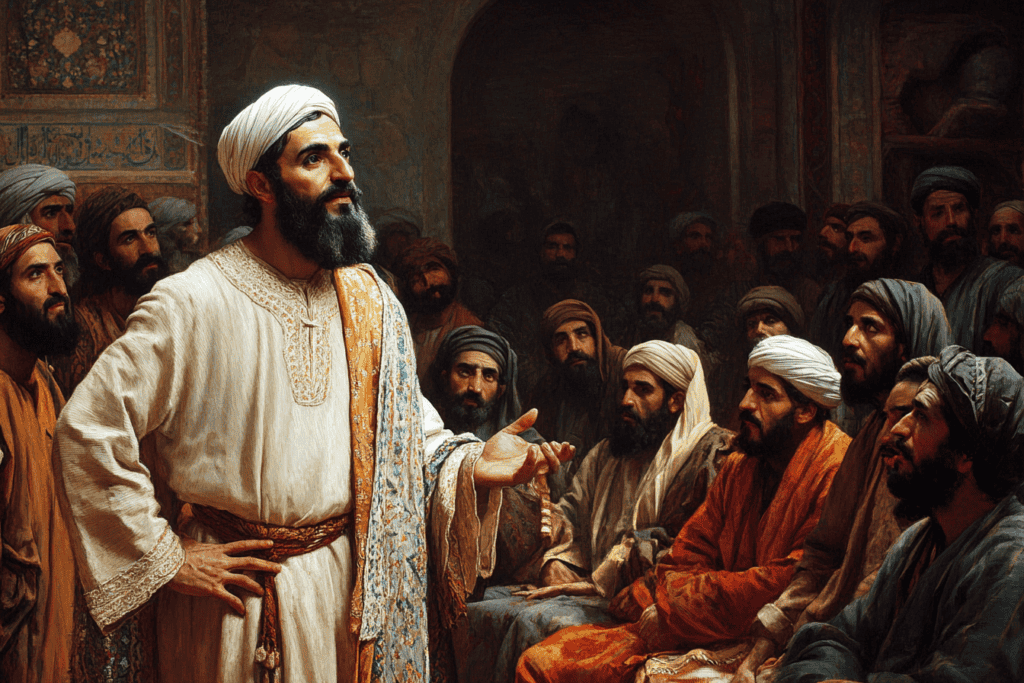
For the first three years after his initial revelation, Muhammad preached his message privately to close friends and family. In 613 CE, he began to preach publicly in Mecca, proclaiming that there was only one God (Allah) and that complete submission (Islam) to God was the right way of life.
Muhammad’s monotheistic message posed a direct challenge to the polytheistic practices of Meccan society. He criticized the worship of multiple gods and idols, as well as the social and economic injustices prevalent in Mecca at the time. His preaching attracted a small but growing number of followers, primarily from the lower classes of Meccan society.
However, Muhammad’s message also met with significant opposition, particularly from the Meccan elite. The polytheistic religious practices were deeply intertwined with Mecca’s economic and political power structures, centered around the Kaaba shrine. Many powerful Meccans saw Muhammad’s preaching as a threat to their way of life and their economic interests.
As opposition grew, Muhammad and his followers faced increasing persecution. Some were subjected to physical abuse, economic boycotts, and social ostracism. Despite these challenges, Muhammad continued to preach, and the number of his followers slowly grew.
The Migration to Abyssinia
In 615 CE, as persecution intensified, Muhammad advised a group of his followers to seek refuge in Abyssinia (modern-day Ethiopia). This Christian kingdom, ruled by a just king, offered a safe haven for the early Muslims. This event, known as the First Hijra (migration), demonstrated Muhammad’s concern for his followers’ safety and his diplomatic acumen in seeking allies beyond the confines of Mecca.
The Year of Sorrow
The year 619 CE was particularly difficult for Muhammad, marking what became known as the “Year of Sorrow”. In this year, he lost two of his strongest supporters: his beloved wife Khadijah and his uncle Abu Talib. The loss of these two pillars of support left Muhammad vulnerable to increased persecution from his opponents in Mecca.
The Night Journey and Ascension
Around this time, Islamic tradition records a miraculous event known as the Isra and Mi’raj (the Night Journey and Ascension). According to this tradition, Muhammad was transported from Mecca to Jerusalem in a single night, where he led other prophets in prayer before ascending through the seven heavens to receive instructions from God. This event, while not mentioned in the search results provided, is an important part of Islamic belief and is commemorated annually by Muslims worldwide.
The Migration to Medina
As the situation in Mecca became increasingly untenable for Muhammad and his followers, an opportunity for refuge presented itself. In 620 and 621 CE, Muhammad met with delegations from the city of Yathrib (later renamed Medina) who were seeking a leader to unite their fractious city. These meetings, known as the Pledges of Aqaba, resulted in an invitation for Muhammad and his followers to settle in Yathrib.
In 622 CE, Muhammad and his followers undertook a carefully planned migration (Hijra) to Yathrib. This event marks the beginning of the Islamic calendar and is considered a pivotal moment in Islamic history. Upon arriving in Yathrib, Muhammad established the first Islamic state, with the city being renamed Medina (meaning “the city” or “the city of the Prophet”).
The Medinan Period
In Medina, Muhammad took on multiple roles as spiritual leader, political ruler, and military commander. He established a constitution, known as the Constitution of Medina, which defined the relationships between the various groups in the city, including the Muslim migrants from Mecca, the native Medinan converts (Ansar), and the Jewish tribes.
During this period, Muhammad continued to receive revelations, which increasingly dealt with social, economic, and legal matters, providing the foundation for Islamic law (Sharia). He also began to lead military expeditions against Meccan caravans and neighboring tribes, which served both to provide resources for the Muslim community and to assert their growing power in the region.
Major Battles

Between 624 and 627 CE, Muhammad led the Muslim forces in three major battles against the Meccans:
The Battle of Badr (624 CE),was a decisive victory for the Muslims, despite being heavily outnumbered. This victory boosted the morale of the Muslim community and enhanced Muhammad’s reputation as a leader.
The Battle of Uhud (625 CE) initially went in favor of the Muslims but ended in a tactical defeat when some Muslim archers disobeyed Muhammad’s orders
The Battle of the Trench (627 CE), also known as the Siege of Medina, saw the Muslims successfully defend Medina against a large coalition of Meccan forces and their allies.
These conflicts were crucial in establishing the Muslims as a significant military and political force in Arabia.
The Treaty of Hudaybiyyah
In 628 CE, Muhammad led a large group of Muslims towards Mecca, intending to perform the Umrah (lesser pilgrimage). Although they were prevented from entering the city, this expedition resulted in the Treaty of Hudaybiyyah, a ten-year truce between the Muslims and the Meccans. Despite initial disappointment among Muslims, the treaty proved to be a strategic victory.
The 10-year peace agreement allowed Muslims to focus on spreading their message without the threat of conflict. This period of stability led to a significant increase in conversions, with the number of Muslim pilgrims growing from 1,400 to 2,000 in just one year.
The treaty’s recognition of the Muslim state in Medina legitimized Islam’s political standing. It also provided opportunities for peaceful interaction between Muslims and non-Muslims, facilitating dialogue and understanding. The ceasefire enabled Muslims to form alliances with other tribes and expand their influence across the Arabian Peninsula.
The Conquest of Mecca
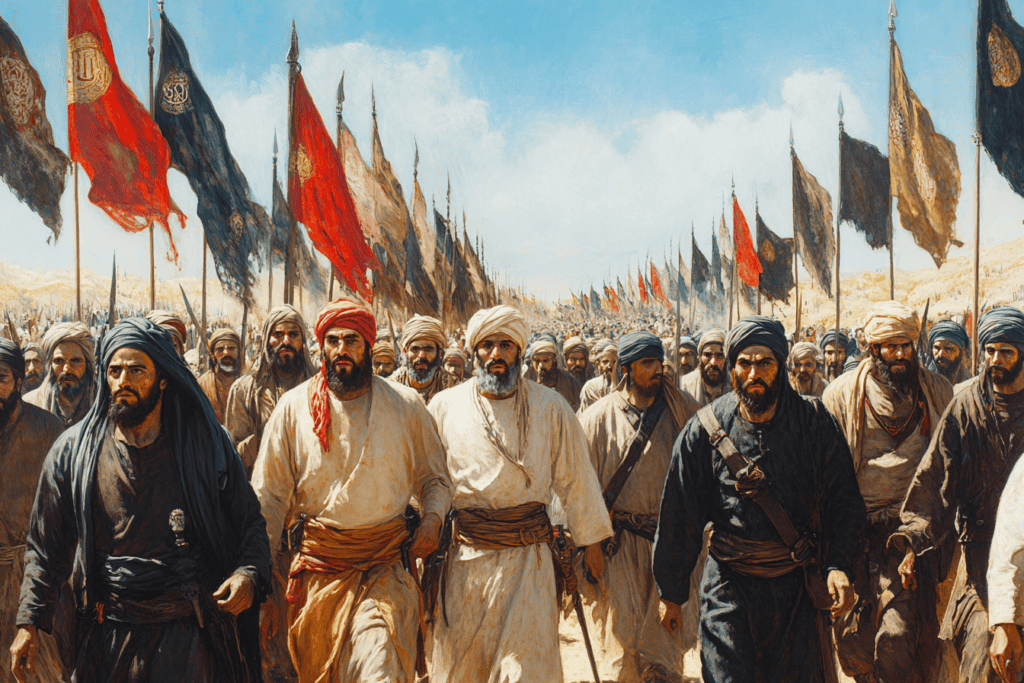
By 630 CE, the balance of power in Arabia had shifted decisively in favor of the Muslims. When the Meccans violated the terms of the Treaty of Hudaybiyyah, Muhammad seized the opportunity to march on Mecca with a force of 10,000 men. As they approached the city, tribe after tribe joined their ranks, swelling their numbers even further.
Faced with this overwhelming force, the Meccans surrendered without a fight. Muhammad entered the city triumphantly but showed remarkable restraint and magnanimity in victory. He declared a general amnesty, pardoning even his most bitter enemies. He then proceeded to the Kaaba, where he ordered the destruction of all the idols, declaring, “Truth has come, and falsehood has departed”.
This peaceful conquest of Mecca was a pivotal moment in Islamic history. It marked the end of the pagan opposition to Muhammad’s message in the heartland of Arabia and paved the way for the rapid spread of Islam across the Arabian Peninsula and beyond. Muhammad’s actions during this conquest, particularly his emphasis on forgiveness and reconciliation, set an important precedent for Islamic ethics and jurisprudence regarding the treatment of conquered peoples.
The triumphant entry into Mecca represented the culmination of Muhammad’s prophetic mission. From a persecuted preacher in his hometown, he had become the most powerful leader in Arabia, uniting the previously fractious Arab tribes under the banner of Islam. This event not only solidified Muhammad’s position as a religious leader but also as a statesman and military commander, setting the stage for the rapid expansion of the Islamic empire in the years following his death.

